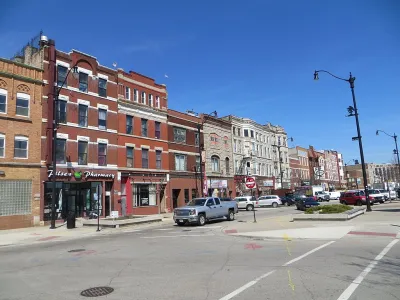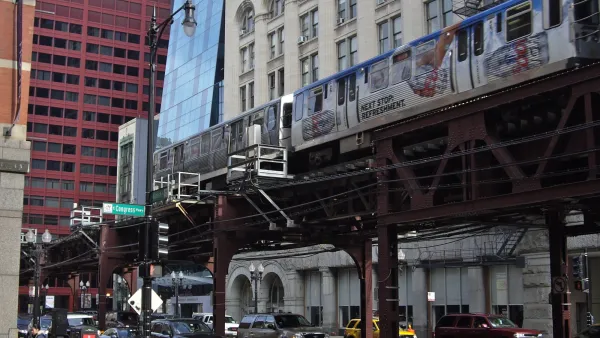Tax increment financing (TIF) districts are common in municipalities across the country. However, the economic development tool is also poorly understood and often the target of criticism.

Anthony Flint considers criticisms of tax increment financing (TIF) and proposals to reform it. In a designated TIF district, projected property tax revenue is calculated for the project as well as for surrounding properties, and those funds are sequestered. “The tax revenue can be used to fund public infrastructure, compensate private developers for their investments, or provide collateral for bonds,” says Flint.
Flint points to examples of TIF successes, but he says that numerous controversies continue to plague TIF projects. One of these issues is a lack of transparency, where TIF funds are sheltered from official oversight and the funds, say critics, are diverted to particular projects. Flint points to analysis by David Merriman, who suggests that states provide more stringent tracking and monitoring of TIF programs:
Model programs can be found in Wisconsin and Illinois, where state agencies track and report on total property tax revenues going to TIF districts, local governments are required to report detailed information related to revenues and their tax base, and nearly everything is published in online databases. All local governments would be well advised to provide extensive, easily accessible information about TIF use, revenues, and expenditures, [Merriman] says.
Merriman also suggests that counties, school districts, and other overlying local governments be allowed to opt out of contributing resources to TIF districts. In addition, he encourages states to review “but for” clauses. The clauses are used as proof that development would not occur without TIF funds, but they are open to varied and loose interpretations.
Abandoning TIF is one option cities have moving forward. But, says Flint, many are not choosing that path:
Instead, they are redesigning and reimagining it, adding provisions to ensure that equity is a consideration, and building in options that allow school districts to maintain access to revenue. Some jurisdictions have experimented with community improvement districts (CIDs) as a kind of hybrid or alternative framework that corrals both sales tax and property tax revenues for a given development project.
Cities are also bundling TIF in private-sector partnerships with finance tools like credit enhancements or stabilization funds. These arrangements have become so common, says Flint, that TIF on its own is referred to as “naked TIF.”
FULL STORY: The Hidden Costs of TIF

Analysis: Cybertruck Fatality Rate Far Exceeds That of Ford Pinto
The Tesla Cybertruck was recalled seven times last year.

National Parks Layoffs Will Cause Communities to Lose Billions
Thousands of essential park workers were laid off this week, just before the busy spring break season.

Retro-silient?: America’s First “Eco-burb,” The Woodlands Turns 50
A master-planned community north of Houston offers lessons on green infrastructure and resilient design, but falls short of its founder’s lofty affordability and walkability goals.

Test News Post 1
This is a summary

Analysis: Cybertruck Fatality Rate Far Exceeds That of Ford Pinto
The Tesla Cybertruck was recalled seven times last year.

Test News Headline 46
Test for the image on the front page.
Urban Design for Planners 1: Software Tools
This six-course series explores essential urban design concepts using open source software and equips planners with the tools they need to participate fully in the urban design process.
Planning for Universal Design
Learn the tools for implementing Universal Design in planning regulations.
EMC Planning Group, Inc.
Planetizen
Planetizen
Mpact (formerly Rail~Volution)
Great Falls Development Authority, Inc.
HUDs Office of Policy Development and Research
NYU Wagner Graduate School of Public Service




























